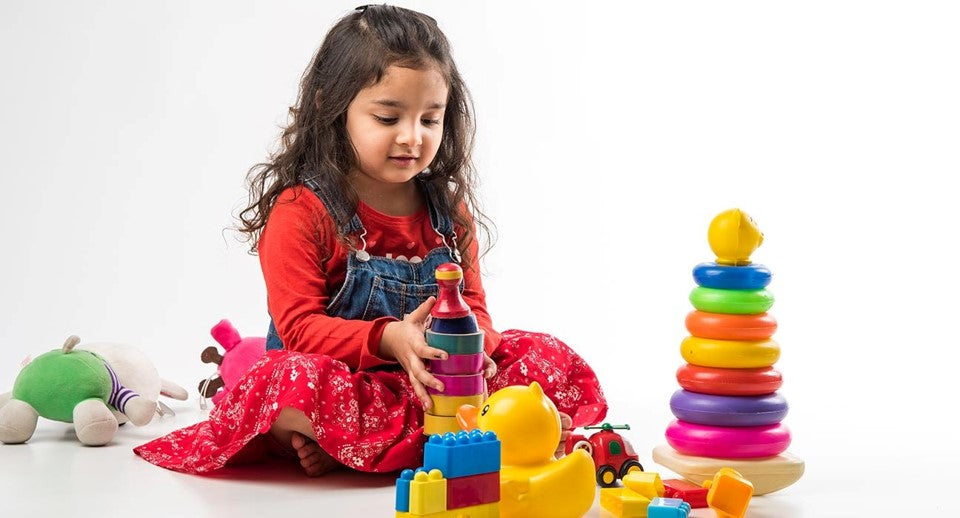Why Play Matters and How to Choose Toys that Help Your Child Learn and Move

Play is how children learn about the world. It’s how they practise movement, test cause and effect, learn to share, and rehearse grown-up roles. Yet not all play is created equal — some toys simply pass the time, while others actively help a child develop physically, socially and mentally.
Below I’ll explain why play is so important, what to look for when choosing toys, and practical tips so you buy fewer, better toys that actually get used. This is written for busy UK families who want playtime to be both fun and purposeful.
The Real Benefits of Play
Play isn’t just entertainment — it’s childhood’s “work”. Through play children:
-
Develop motor skills. Running, jumping, throwing and riding build gross motor skills; threading beads or using play tools build fine motor control.
-
Practice thinking skills. Problem-solving, planning and creativity all happen when kids build, experiment or pretend.
-
Build language and social skills. Role play, turn-taking and cooperative games grow vocabulary and empathy.
-
Regulate emotions. Play helps children process feelings and practise self-control in a safe space.
-
Stay healthy. Active play improves fitness, balance and coordination, and helps sleep.
If we want kids who are curious, resilient and physically confident, we need to give them the right kinds of play opportunities.
What Makes a Toy “Good” for Development?
When you’re choosing toys, ask: “Will this toy invite active play or invite thinking?” The best toys usually do both. Look for:
Open-ended play value
-
Toys that can be used in many ways (blocks, play people, fabric, boxes) last longer and encourage creativity.
Active movement
-
Anything that encourages jumping, running, balancing or riding (balls, scooters, trampolines, ride-ons) helps physical development.
Problem-solving & construction
-
Puzzles, building sets and STEM kits teach planning, spatial awareness and persistence.
Pretend play
-
Kitchens, tool sets and role-play costumes help language, storytelling and social skills.
Sensory & fine-motor
-
Playdough, threading beads and simple craft kits support hand control and concentration.
Age-appropriate challenge
-
A toy should be slightly harder than what your child can do alone — that’s where learning happens.
Practical Buying Tips (so You Don’t Waste Money)
-
Buy fewer, better items. A small set of high-value toys will be played with more than a cupboard full of one-use gadgets.
-
Think multi-use. A scooter can be transport and a game prop; a box can be a car, shop or den.
-
Check the age guidance and safety marks. In the UK look for CE/UKCA where applicable, choking warnings and battery instructions.
-
Avoid “single-use” gimmicks. Toys that need rare batteries or a proprietary app quickly lose value.
-
Rotate toys. Keep half the toys away for 2–3 weeks, then rotate them back — novelty boosts play.
-
Read reviews and see the toy in action. Videos often show whether a toy is robust or fussy to set up.
-
Pick toys that invite grown-up play. Shared play boosts learning and keeps children engaged longer.
Safety & Practicalities
-
Batteries & noise: Check battery type and how long they last. Noisy toys are fun but can be frustrating at home — consider volume control.
-
Materials: For toddlers choose washable, non-toxic materials. For outdoor toys check weather resistance.
-
Assembly & storage: If a toy needs long assembly or lots of space, ask if you have the room and patience for it.
-
Supervision: Ride-ons, trampolines and anything with moving parts need adult supervision and appropriate protective gear where needed.
Quick Shopping Checklist for Parents
-
Is it open-ended or single-use?
-
Does it encourage movement or thinking (ideally both)?
-
Is it the right size/weight for my child?
-
Is it robust and easy to clean?
-
Can we store it easily?
-
Are spare parts (batteries, props) easy to replace?
Toy Ideas That Actually Help (By Type)
-
Outdoor / active: balance bikes, scooters, small trampolines, balls, climbing frames.
-
Construction: wooden blocks, magnetic tiles, simple mechanic kits.
-
Pretend play: play kitchens, tool benches, dressing-up sets.
-
Creative: paints, large crayons, collage kits, playdough.
-
STEM & thinking: simple coding toys, pattern puzzles, age-appropriate science kits.
-
Interactive but limited tech: toys where tech supports play rather than replaces it (e.g. simple RC, programmable robots for older kids).
How Parents Can Make Play Even Better
-
Join in (sometimes). A short period of shared play helps set the tone and teaches how to use a toy.
-
Ask open questions. “What is the spaceship doing?” “How could we make it fly further?” prompts thinking.
-
Set up mini-challenges. Build the tallest tower, design a race course, or make a story about a toy.
-
Encourage outdoor play daily. Even 20 minutes outside accelerates motor development and mood.
Final Thought
Play is a child’s natural path to learning. By choosing toys that invite movement, imagination and thinking, you’re not only buying fun — you’re investing in their development. A handful of well-chosen toys, regular outdoor play, and a grown-up who joins in from time to time will do more for a child than many novelty gadgets ever will.
If you’d like, we can suggest a small starter set tailored to your child’s age and interests — or show you the Babbler picks for active and educational toys. Want us to put together a short list for your child’s age group?


Leave a comment